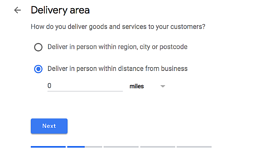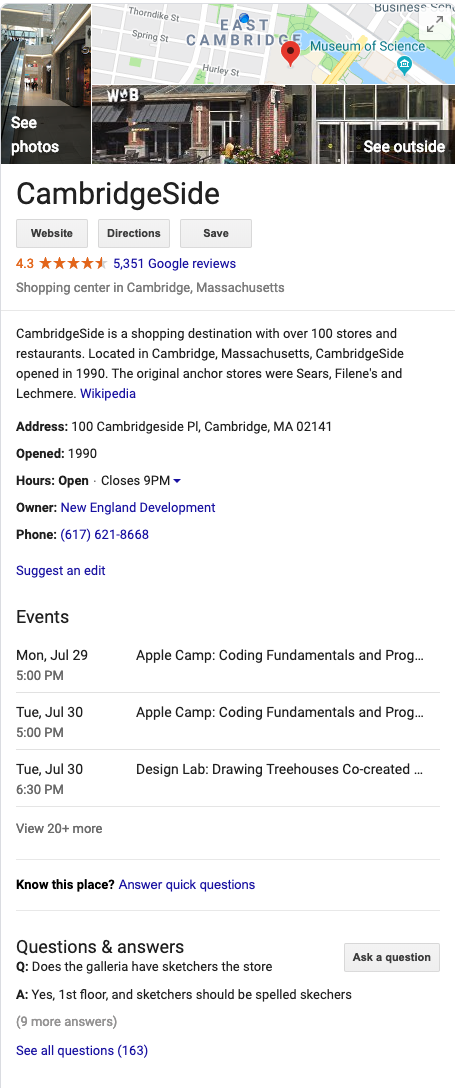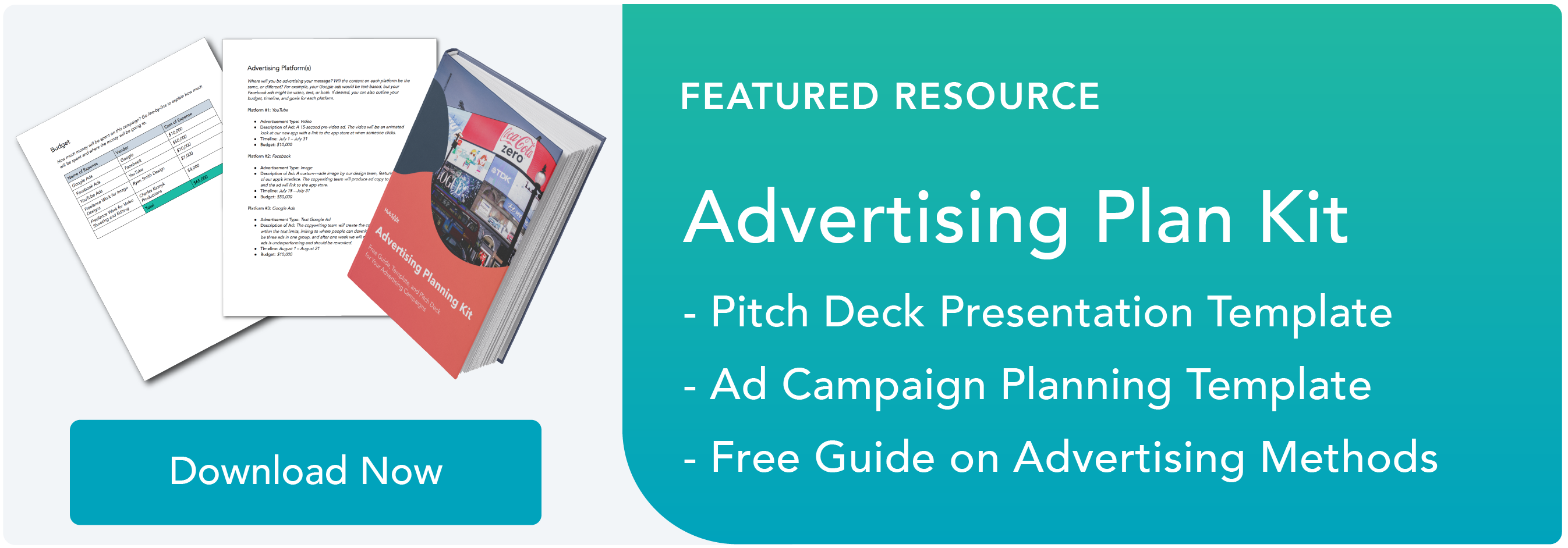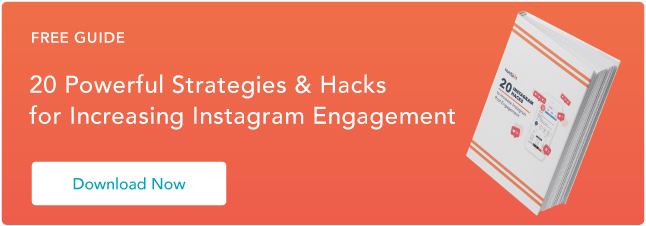
by Steve Wolf | Jul 26, 2019 | Business
When you work at a small business with a limited budget, it’s not really possible to shell out $340,000 for a 30-second TV commercial, or $10,000 for an email marketing campaign.
It can be frustrating when your budget dictates how many people your business can reach.
Surprisingly, there are a lot of free ways to supplement your paid advertising efforts. By incorporating free advertising tactics into your strategy, you can remove some nonessential costs and dedicate your budget to deeper, more longterm plays.
In fact, we suggest some of these methods regardless of your budget.
To help you spread the word about your business without breaking the bank, we’ve compiled 14 ways to get advertising for free.

How to Get Free Advertising
- Use Google My Business to optimize for local search.
- Check out Yext.
- Write guest posts for other blogs.
- Answer Quora questions.
- Publish content on LinkedIn.
- Offer to do interviews on other business’ podcasts.
- Promote your website on your email signature.
- Send email newsletters.
- Network at in-person events.
- Speak at an event.
- Do a free product giveaway or contest.
- Put up brochures or flyers.
- Create YouTube videos.
- Take advantage of your partnerships.
- Post on social media.
- Experiment with photo and video platforms.
- Encourage happy customers to give online reviews.
1. Use Google My Business to optimize for local search.
One of the most powerful free ways to advertise your business is through Google My Business, which enables companies to manage their presence on Google Search and Google Maps. The tool can bolster your rankings in local search results.
Ranking high in local search shows you’re a legitimate and relevant company: you wouldn’t rank #1 in Google for “pizza places near me” if you’d closed down six months ago. Plus, if you rank high in local search, more consumers will choose your business over a competitor’s. In today’s fast-paced world, convenience is key.
Click here or scroll to the bottom of this post to learn how to advertise on Google for free and find out more about this process.
2. Check out Yext
The more places your business is listed online, the better your chances of showing up in search results, and the easier it is for potential customers to find you. To ensure great local SEO, the details of your listings on every website and online directory need to match up.
For instance, if your website lists your company’s new phone number, but Yelp lists your old one, this inconsistency could hurt your SEO. Yext scans the web to find every place your business is listed, so you can tweak your listings to guarantee accuracy.
3. Write guest posts for other blogs
There are a few major advantages to guest posting for a well-established blog. You can benefit from connecting to that blog’s audience, and you can also start establishing yourself as a thought leader in your industry.
Since guest posting on a popular blog allows you access to an established audience and high domain authority, this practice can sometimes be more beneficial than posting to your own blog. Plus, you can link back to your own website from your article, giving you an inbound link that boosts your domain authority and can increase your own website’s ranking in search engines.
4. Answer Quora questions.
Writing content for Quora can expose your business to a large audience: TechCrunch reported that some of Quora’s active contributors receive more than 30,000 monthly views.
Besides the large built-in audience, your business can answer direct questions from prospective customers. This lets you interact with high-quality potential leads and establish yourself as an expert in the subjects that matter most in your industry.
5. Publish content on LinkedIn.
LinkedIn is an platform to connect with professionals, which is why it’s also a great place to share business-related content. LinkedIn’s blogging platform lets you demonstrate your expertise within your industry.
Your connections and other LinkedIn members will engage with your posts and share them, doing the free promotion for you. With almost half of all social media traffic coming to B2B company sites from LinkedIn, it’s a missed opportunity if you don’t publish and promote content on LinkedIn.
6. Offer to do interviews on other business’ podcasts.
To figure out which platforms your team should priortize, it’s important to diversify your promotion platforms to discover where your audience is already consuming content. Some of your audience might prefer listening to podcasts over reading articles. To reach those people, contact a few businesses with podcasts and pitch interview ideas.
7. Promote your website on your email signature.
With all the emails you send every day, it’s a shame if you aren’t taking advantage of the promotional potential of your email signature. Your email signature can also be unexpected property to promote a sale, contest, event, or even a new blog post. Add a link to your business’ website on your Facebook, Twitter, and Instagram profiles, as well.
8. Send email newsletters.
An email newsletter can be a useful vehicle to promote content, share business-related news, and build deeper relationships with both potential and existing customers. There are plenty of free tools out there that assist you in designing, sending, and optimizing your newsletter.
With the right time investment, an email newsletter can be the perfect place to share quality content with leads and potential consumers, establishing your brand as helpful and informative.
9. Network at in-person events.
Connecting with fellow professionals at industry networking events is a great opportunity to meet potential consumers in a place where they are eager to discuss your business. The niche topics of networking events ensures you’re meeting high-qualified leads. For example, a “Best Technology Startups of 2018” event will primarily be filled with participants who are interested in technology and startups.
Particularly for small businesses looking to make their first connections, networking is a chance to get your name out there, meet potential partners, and find opportunities for growth. Plus, it’ll keep you up-to-date on trends in your industry.
10. Speak at an event.
Similar to networking, speaking at an event about a topic related to your industry is another way to exhibit your expertise. Giving a thought-provoking and powerful speech will draw attention to you and, by association, your business, which can increase brand awareness and prove your business is qualified to tackle consumer’s challenges.
To start, brainstorm different topics and volunteer at various upcoming networking events and trade association conventions. If you’re afraid of public speaking (don’t worry, a lot of us are), you could enroll in a local Toastmasters chapter to improve your game.
11. Do a free product giveaway or contest
A product giveaway or contest is an easy way to incentivize new viewers to check out and subscribe to your social media channels or website. Plus, handing out inexpensive branded products like t-shirts or mugs is a good way to spread your brand name. Word of mouth is alive and well — and a little swag can go a long way.
12. Put up brochures or flyers.
Putting up brochures or flyers in local libraries, coffee shops, and businesses is a unique way to market to offline locations where people spend a good deal of their time.
You can create free brochures and flyers on PowerPoint. Depending on your industry, it might even help you reach an ideal clientele: if you’re a physical therapist, for example, perhaps you could hand out brochures to local gyms or nearby hospitals.
13. Create YouTube videos.
YouTube has more than a billion active users, which accounts for almost one-third of everyone on the internet. Plus, 59% of executives — i.e. decision makers — go to videos before written content.
Creating engaging and informative YouTube videos is one of the most efficient ways to sell your brand. If done right, your YouTube videos will entertain viewers enough to seek out your website.
14. Take advantage of your partnerships.
Partnerships are an opportunity to offer supplementary services that you don’t provide. For example, a web design company and a copywriting agency might choose to partner together, so when a client requires written content for her web pages, the web design company can offer copywriting services from their partner.
This increases consumer satisfaction, and it also provides exceptional advertising opportunities. When your partner’s consumers need your services, your partner will point them in your direction.
15. Post on social media.
Nowadays, social media is crucial to most marketing strategies. Luckily, most types of social media platforms and posts are free — even to businesses. While many platforms will let you advertise, you can still post or tweet for no cost if you’re on a budget.
Pick the platforms that best suit your audience. Then, post links, photos, videos, or text posts about your company, product launches, or any other occurrence that you’d like to promote. Facebook, Twitter, and LinkedIn are a suitable place to start for most businesses. They all offer a way to share video, text, photo, and link-based posts and have large user bases. To learn more about other forms of social media, check out this post.
16. Experiment with photo and video platforms.
While Facebook, Twitter, and LinkedIn could be great platforms to start on, expanding to platforms like Instagram or Pinterest will give you more opportunities to show product shots or embrace the heavily-visual strategy of influencer marketing.
Aside from spreading awareness with free images of your product or service, most social platforms, including Facebook, offer live video and story features which can allow you to create video promotion related to your products. For example, you might use Instagram Stories or Facebook Live as an outlet to publish tutorials of how to use your products.
Because these videos and photos are on social, you can also boost their shareability by hashtagging them, creating interesting captions, and encouraging fans to react with actions like “likes” or comments.
17. Encourage happy customers to give online reviews.
Word of mouth is still one of the best ways to market your product. Consumers trust the opinions of other consumers, especially when there are many great testimonies.
If you have happy customers, encourage them to write a review about their experience on popular review platforms like Google, Facebook, and Yelp. If you want great reviews on Facebook, be sure to create a Facebook Business page if you don’t have one already.
How to Advertise on Google for Free
As mentioned above, you can create a free page on Google My Business which can help you rank higher or first in search results. Here’s how it works.
Create Your Google My Business Account
First, you’ll want to create a GMail account for your business. Then you’ll want to register for Google My Business with that account.
Google will first ask you to enter the name of your business. Then, you’ll be asked to select a “Delivery Area.” In this form, note the mileage and area where your target audience lives.
Optimizing Your Business Page
After your setup process is complete, you’ll be able to fill out your profile. As you do this, you ideally want to fill out all the information Google requests for the best search optimization. A few key things you’ll want to include will be:
- Your address
- A phone number, email address, and other contact information.
- Your website
- Hours of operation
- Photos of your business and products
- A detailed description on what your business offers
- Pricing or menu information
- The year your company opened
- Other business attributes such as “free Wi-Fi.”
The above items are things locals might search specifically for. For example, if someone searches for a “cheap Mexican restaurant open after 8 p.m.”, Google will examine your business profile’s details and prioritize your restaurant if it seems like a great match.
Here’s an example of what it looks like when a Google business fills out all their information:

Verify and Monitor Your Business Page
Once you’ve created your Google My Business profile, be sure to verify your listing so Google knows it’s a real, legitimate business. There are a few ways to do this including email, postcard, and phone verification.
You can also download the GMB app to monitor how your business is doing on a smartphone. This post walks you through the different verification processes.
Don’t Forget About SEO
Along with Google My Business, taking advantage of free SEO strategies can also help your website rise higher in search results. These tactics can be simple and easy to work into blogging, web design, or other processes. Here’s a template that can help you plan your SEO strategy this year.

Originally published Jul 26, 2019 4:58:00 PM, updated July 26 2019
Don’t forget to share this post!

by Steve Wolf | Jul 25, 2019 | Business
GIFs are fun, digestible, and, most importantly, relatable — which is why everybody loves them and shares them on social media so much.
Additionally, since Instagram is the top social media platform for visual content, your followers expect your brand to post more compelling content than just the photos of your company’s complimentary lunch each week.
Your audience want to feel something when they scroll through Instagram, and GIFs can forge that emotional connection with them.
Below, we’ll show you how to post a GIF on Instagram — with a series of GIFs — and share some of the social network’s best GIF apps.
How to Post a GIF on Instagram
- Download the free GIPHY app.
- Open GIPHY.
- Search for a GIF.
- Press the “share” button in between the heart and the three dots (it looks like a paper airplane).
- Press the Instagram share button.
- Allow GIPHY to access your photos.
- Allow GIPHY to open your Instagram app.
- Choose to post the GIF to your story or feed.
- Add a filter, a caption, and share!
Here’s a series of GIFs that will show you exactly how to post a GIF on Instagram:
1. Download and open GIPHY.
You can find GIPHY in the Apple and Google Play app stores.
2. Search for a GIF and tap the one you like.

3. Press the “share” button in between the heart and the three dots (it looks like a paper airplane).
It will drop down to a screen with all the platforms you can share the GIF on.

4. Press the Instagram share button.
This is where GIPHY will give you one or two notifications asking if it can access your photos and open Instagram — hit “OK” or “Allow”.

5. Choose to post the GIF to your story or feed.

6. Add a filter, a caption, and share!

The 6 Best Instagram GIF Apps
GIPHY has the world’s largest library of animated GIFs and stickers.
Free on IOS and Android
4.7/5.0 Rating
On Giphy Cam, you can record your own GIFs and add filters or special FX to them.
Free on IOS and Android
4.8/5.0 Rating
ImgPlay lets you turn your own videos, live photos, photos, and burst photos into GIFs or videos. You can also add captions and filters to your GIF, edit its frame sector and order, and control its frame speed and direction.
Free on IOS and Android
4.7/5.0 Rating
With GIF Maker, you can convert your photos or videos into GIFs, Boomerangs, and memes.
Free on IOS and Android
4.6/5.0 Rating
Momento lets you use your live photos and videos to create GIFs and stop motion videos. You can also add augmented reality, filters, music, stickers, effects, text, and zoom to them.
Free on IOS and Android
4.6/5.0 Rating
Apple featured Songclip on their “New Apps We Love List” last year. And it was included for good reason. The app has a licensed music library full of modern and classic hits that you can add to their collection of GIFs or your own created GIF. But if you don’t feel like making your own GIF-music combination, you can just select and send one of their trending Songclips to your friends.
Free on IOS
4.8/5.0 Rating

Originally published Jul 25, 2019 2:00:00 PM, updated July 25 2019
Don’t forget to share this post!

by Steve Wolf | Dec 4, 2017 | Business
Business in the modern age is seismically different compared with even five years ago. Businesses have been profoundly changed by the influx of digital-based processes and systems required to work and grow effectively.
A wide mix of digital technologies has now become integral to most business functions, with software taking over even human-based roles in some instances. Digital transformation will be key to all business growth: International Data Corporation (IDC) forecasts suggest that 60 percent of the Forbes Global 2000 will have doubled their productivity by 2020 due to digitization and the adoption of technology to streamline processes.
With the largest companies in the world and CEOs of all brands seeing growth and digital transformation as strategic imperatives, even the smallest brands should follow suit and embrace the need for all things digital.

The evolution of digital
Business is constantly shifting and evolving, and this has been accelerated exponentially by the growth of digital. Cloud technology has given companies the scope to expand more quickly and scale up or down instantly. It also means remote working can be embraced more openly, with digital solutions allowing for office-based tasks to take place practically anywhere.
The world — from business to personal and social — has become increasingly reliant on all things digital. Everything, even the most personal issues, can be found discussed in public forums, across social media, and practically anywhere! And with this shift in communication and transparency, there is a real need for businesses to act.
Capitalizing on the digital transformation of society is a must for brands. Digital transformation means there is, even more, the market potential for your brands and even more direct access to your customers. Digital marketing needs to go beyond a brand awareness vehicle and rightly become integral to how brands engage and convert their target audiences.
Approaching digital transformation
The way your brand approaches digital transformation needs to be exact to ensure the best possible results. Keep the following points in mind when looking at getting the most from this modern phenomenon.

Mobile first, always
Forecasts suggest that by 2018, mobile devices will drive nearly 80 percent of global internet usage and 60 percent of digital ad spend. This alone suggests businesses cannot ignore the power of mobile and should always consider mobile access to their channels first.
Brands need to embrace mobile as a method of communication not only for customers but also for staff and internal communications. Consumers use mobile as a key tool for research, so having relevant and the easy-to-access information is essential.
Fully analyze your data
The volume of data generated by digital marketing and digital processes within your company can be unwieldy, so it has to be handled and analyzed correctly. It’s not enough to simply look at numbers going up and down and work from that.
You need to undertake more complex social media analyses and evaluation of your other digital activities so you have a full understanding of the best metrics for your business and what you need to track. Getting hung up on vanity metrics can be fatal for a business. It helps to differentiate between “vanity” and “sanity” when measuring social media performance.

Break down silos
Silos have always been a problem in business, and they make collaboration and growth more difficult. As already mentioned, digital transformation isn’t just about what can be done with your customers; it can also revolutionize internal processes and communications.
A fully digitally transformed internal communications system means even the most reluctant departments are obliged to be fully involved and contribute their required elements to the business’s growth and tasks at hand. Employee engagement can be just as important as customer engagement on some levels, as disengagement within the business is often mirrored in results.
Therefore, a fully digitally transformed business is, by its very nature, primed to collaborate for enhanced productivity, interdepartmental knowledge sharing and more efficient working practices.

Embrace technology
The advance of technology has allowed for sophisticated tools to work alongside the people in your business to deliver solid results. Marketing technology is, of course, central to this, and every business needs to cultivate and build their own specific martech stack.
Central to this, as Kevin Bobowski explains on MarTech Today, is the need for marketers to be hyper-agile: As customer behavior changes, so must martech stacks be adapted and evolved to meet rising expectations. That’s no mean feat when your stack will most likely incorporate everything from marketing automation to social media management tools to CRM and internal communications software programs.
Cultural change inside and out
The exponential curve that technology is developing has drastically changed how the whole world works. Culture can be, and is, dictated by what happens online. Social media is a clear example of this — it has become omnipresent and integrated into anything from emotional reactions of football fans to refereeing decisions on integrated marketing campaigns.
Digital transformation, therefore, transcends business or technology; it is a cultural change in how the world now operates. Successful digital transformation is a driver of business growth, productivity and competitive advantage.
Indeed, there are no corridors of offices, or facets of business, that are impervious to digitalization. From enhanced collaboration and productivity to delivering genuine ROI and business value, from the destruction of silos to a more engaged workforce, the digital transformation will only be truly achieved if brands transform on the inside as well.
Brands that are not fully embracing the power of digital and accepting how the world has shifted to a more digital focus will not see their success and growth continue at the same rate. Smartly selecting the right technologies and using them effectively for the benefit of your business ensures that you’re keeping up with the competition and positioning yourself for future developments in technology and digital.

by Steve Wolf | Oct 31, 2017 | Business
If the third quarter is a warmup exercise for e-commerce advertisers plotting their fourth-quarter spending spree, then it should be a happy holiday season for Facebook.
E-commerce advertisers, on average, spent 20 percent more money on Facebook ads in the third quarter of 2017 than they did in the same period last year, according to a report published on Tuesday by Nanigans, a company that provides software for brands to automate their Facebook ad buys and that is a part of Facebook’s Marketing Developers program. A Nanigans spokesperson declined to say how many advertisers were included in the study.
While e-commerce brands are pushing more money into the social network in general, they are particularly purchasing more mobile video ads and retargeted ads from Facebook. These marketers spent, on average, 40 percent more money on Facebook’s mobile video ads in Q3 2017 than in Q3 2016. And the share of their ad spend that went to Facebook’s Dynamic Ads — its product catalog-promoting ad format that retargets the people who browsed a brand’s site or app — increased by 284 percent year over year.
While the share of e-commerce brands’ budgets going to Dynamic Ads grew, it’s unclear how big (or small) a piece of those budgets the ad format accounts for. The Nanigans spokesperson declined to say what was the actual share of e-commerce brands’ budgets spent on Dynamic Ads.
Interestingly, e-commerce advertisers increased their spending on Facebook despite an increase in the social network’s ad rates and a decrease in its ads’ performance for these brands.
E-commerce advertisers typically paid $8.40 for every thousand times their ads were served across Facebook and its Audience Network ad network of third-party sites and apps (Nanigans’ study did not include Instagram campaigns). That’s a 69 percent higher CPM than e-commerce brands paid a year ago and corresponds with a 57 percent year-over-year increase among all advertisers to $9.31.
While e-commerce brands paid a premium for impressions, clicks were significantly cheaper at $0.46 on average. That CPC has similarly swelled over the past year, but e-commerce brands also pay less money per click than the average Facebook advertiser that paid $0.55 per click in Q3 2017, a 54 percent increase year over year.
At the same time Facebook’s ad rates have risen, its ads’ performance has dipped. In Q3 2017, people clicked on e-commerce brands’ Facebook ads about 1.84 percent of the time, down 4 percent compared to a year ago. However, that’s still a better click-through rate than the average advertiser saw on Facebook. In Q3, Facebook’s worldwide click-through rate averaged 1.69 percent, up 2 percent compared to a year ago but down 4 percent compared to the previous quarter. That marked the first time Facebook’s average global click-through rate declined from Q2 to Q3, according to Nanigans, though the company’s spokesperson said that shift “is unlikely to be indicative of a larger directional change in the market.”


















